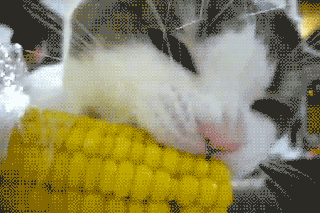

i grabbed both of these tonight at this local market. i'd never seen them before and they weren't too expensive ($10 each) but i think the labels won me over. hope they taste as good as they look.
i also had this pretty things on sunday and was kinda shocked to find out it was only 2.8%. tasted like it was much more than that. i saw their other recipe (1838) for this one tonight but opted for the two above.

Quote:
It sounds simple, but you won’t find many other historical beers brewed this way. There’s no creativity involved in our brewing for OUAT. We reproduce as closely as possible what the brewer-from-the-murky-past did the day he wrote the records in his amazing olden-days curly handwriting. We don’t let anything get in the way.
Brewing these beers is challenging: to our heads, the brew house and our wallets. First of all, resisting the temptation to tinker with the recipes is hard: that’s why we are so proud of the authenticity of these beers. It’s easy to see these recipes as inspiration instead of fact; it’s easy to criticize them; it’s easy to think the beer will be boring or horrible! Even Ron once told me he was once tempted to throw a few extra pounds of hops into a batch, and he’s the historian! But we resist all these thoughts and make the beers exactly as they were written in history. Dann always says, if there’s a choice between making a better beer and making a more authentic beer, we will always choose authenticity over improvement. (This only holds true for Once Upon a Time, not our other beers!)
Second, these beers were brewed in very different breweries and very different times. In the 1800s, hops were a major commodity crop in Europe and the Middle East: hops were cheap, available, whole leaf plants. They were chucked into brewkettles in enormous quantities. It was not unusual to see a ton of hops used in a batch of beer. Yes: an actual ton, as in the unit of measurement. Today hops are delivered in 11lb vacuum-packed mylar bags, not by the warehouse-load. Of course, our brewhouse and batch size is waaaay smaller than those historical batches, so we can do it: but these hop quantities still cause major issues with yield, clog up the brew house, and make it hard to figure out how to make any money.
The first beer we did was a Mild ale from 1832. This beer had so many whole-leaf hops added to it you could stand a stick up in the boil. We were forbidden to use whole leaf any more after that: the hops clogged every valve in the brewery. So now we use the right amount of hops, but they are pelletized, not whole leaf. These hoppier beers have more than twice the hopping rate of a modern American double IPA. Put that in your pipe and smoke it.
Talking of pipe smoking, that’s one of the unique characters we’ve noticed in the hoppier beers from the Once Upon a Time series. Something about boiling that many hops in sweet wort leads to a caramelized, smokey character. And as Dann loves to point out, these beers would invariably have been enjoyed by mustachioed fellows with a pipe in one hand and a beer in the other. (That’s his excuse for his two new favorite hobbies anyway).
So, on to the beers we’ve just brewed. We were looking to make something else similar to the first 1832 Mild we did. People are always asking us how on earth that beer is a Mild ale. The answer is, that Mild then did not mean dark or weak, it meant young. I love this. History at work, making us modern beer drinkers who like to put beers into style boxes all sound like a right bunch of nitwits. But, we’ve also always wanted to make an “actual” mild, as in a dark, low gravity drinking beer. Of course, Ron had the perfect way to kill two birds with one stone, and do a fun historical experiment at the same time.
So, these are our new historical beer releases: two beers from the same brewery, brewed under the same brand name, 107 years apart. X Ale, 22nd November 1838, and X Ale, 22nd February 1945. These beers were from Barclay Perkins brewery in London (now long closed). They were brewed & sold as the same beer over these 107 years, but the recipe and process changed dramatically. The beer changed from a golden, 7.4%, extremely hopped ale in 1838 into a 2.8% dark grainy beer in 1945. Probably a lot of factors came into play: wars, hop shortages, grain pricing, rationing, taxation, patriotism, the motorcar, the industrial revolution… I’m guessing these all played a role in the weakening and darkening of this beer. Interestingly, since 1945, Mild ale in Britain hasn’t changed so much: it’s still dark, and one of the weakest beers produced.
All we can say for certain is that these beers are faithful recreations showing that dramatic change was afoot between 1838 and 1945, and you can taste history-in-action by drinking the two beers side by side, starting on March 14th at Publick House in Brookline, and shortly after in bottles and kegs far and wide! Ron Pattinson will be flying in from Amsterdam for the occasion, so if you’d like to meet the historian behind it all, that’s another reason to come on down. The more compelling reason, of which more in Part III, may or may not be… the costumes!!









